AP Environmental Science Unit 1.4: The Carbon Cycle
Vocabulary
==Overview==
- Biogeochemical Cycles: Cycles of elements as they move through living and nonliving factors.
- Reservoirs: Places where elements are stored for part of the time.
- Pathways: Processes that move the elements between the reservoirs.
- Biomass: Renewable energy that comes from organic matter/organisms.
==Carbon Cycle==
- Organic Compounds: Compounds that have carbon-carbon or carbon-hydrogen bonds.
- Photosynthesis: The process by which plants use sunlight, water, and carbon dioxide to create oxygen and energy in the form of sugar.
- Cellular Respiration: The process of breakdown of food in cells and organisms with the release of energy.
- Combustion: Occurs when any organic material is reacted (burned) in the presence of oxygen to give off the products of carbon dioxide, water, and energy.
- Anaerobic Decomposition: Decomposition without the use of oxygen.
- Fossil Fuel Formation: Dead organic matter builds up underground faster than it can be anaerobically decomposed, and sediment pressurizes it.
- Diffusion: Molecules moving from an area of higher concentration to one of lower concentration.
- Shell Formation: To build shells, marine life extracts calcium and carbonate ions from ocean water, combining them to make shells.
- Deposition: The laying down of sediment carried by wind, flowing water, the sea or ice.
The Carbon Cycle
==Reservoirs==
- Atmosphere: The layers of gases surrounding a planet or other celestial body.
- Contains Carbon Dioxide (CO2) and Methane (CH4 - converts to CO2 and H2O through exposure to Ozone).
- Biosphere: The part of Earth’s surface where life exists.
- Contains consumers, biomass, and organic molecules (ex: Glucose [C6H12O6]).
- Lithosphere: The solid, outer part of Earth, including the brittle upper portion of the mantle and the crust.
- Contains fossil fuels (coal, oil, and natural gas) and Limestone (CaCO3).
- Hydrosphere: All the waters on the Earth’s surface.
- Contains CO2 and Carbonate (CO3^-2).
- Ocean Biosphere: The part of the Ocean where life exists.
- Contains organisms, biomass, organic molecules (ex: Glucose [C6H12O6]), and Calcium Carbonate.
==Pathways==
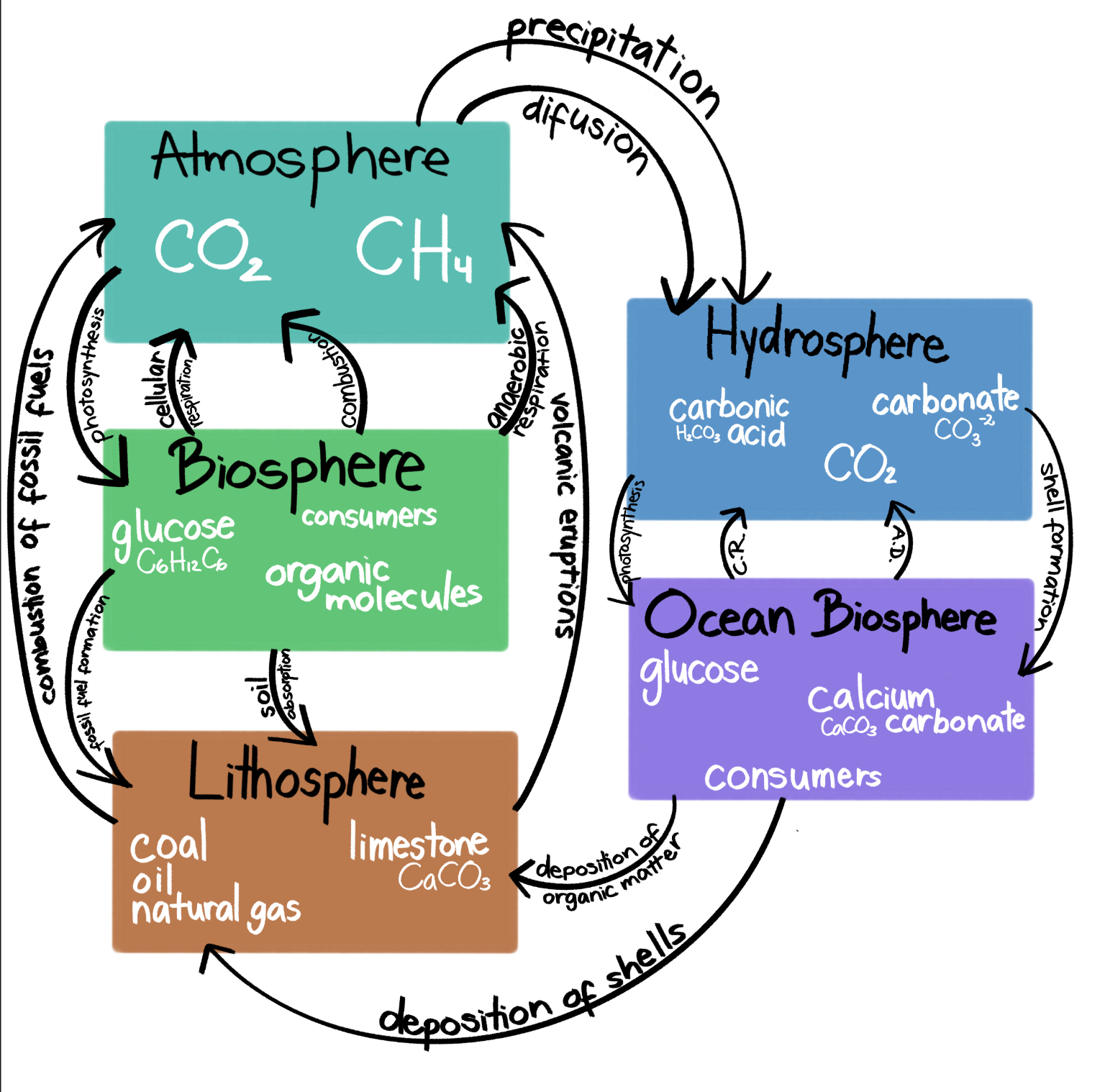
Atmosphere to Biosphere
- Photosynthesis
- Carbon Dioxide (CO2) → Plants
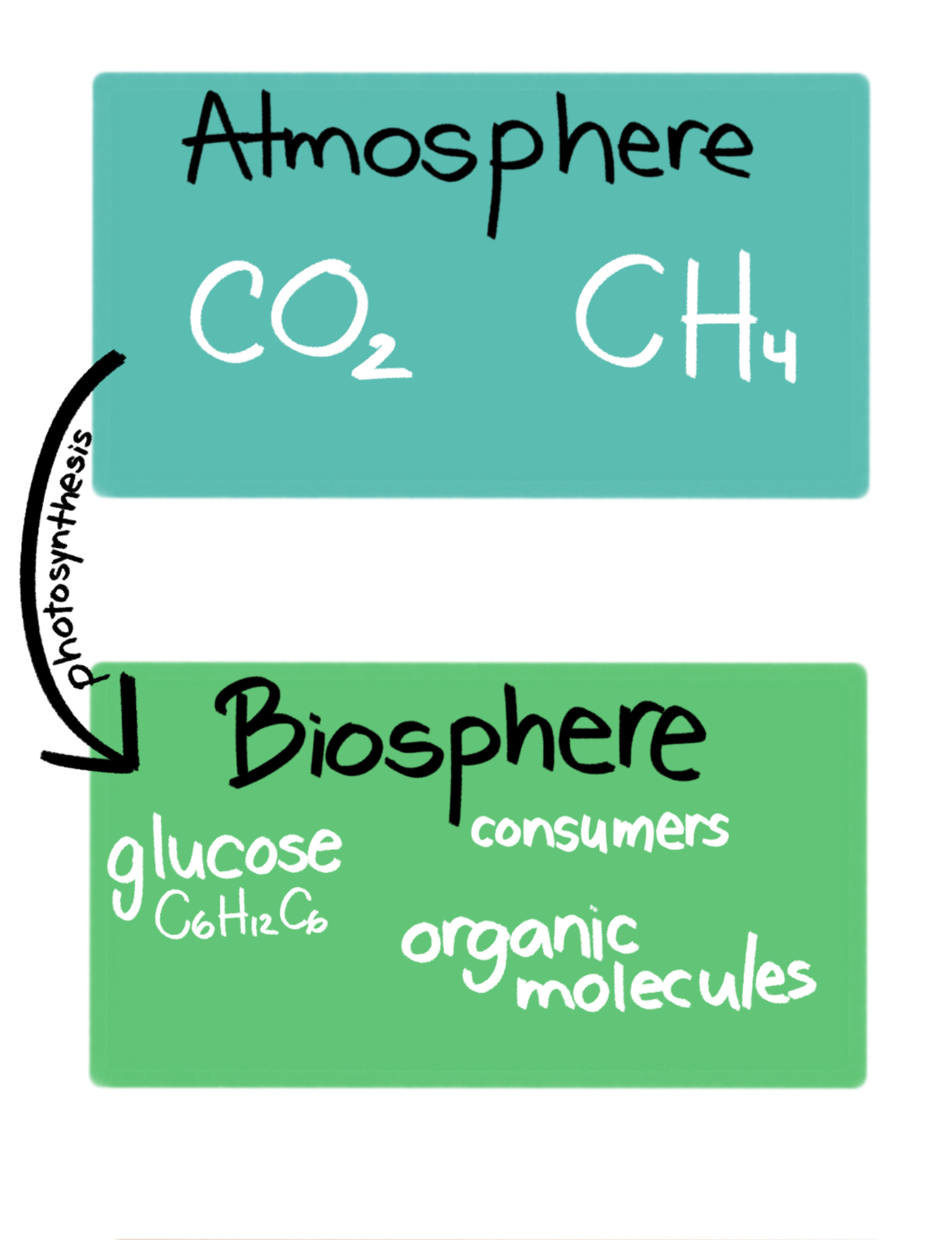
Biosphere to Atmosphere
- Cellular Respiration
- Consumers → Carbon Dioxide (CO2)
- Combustion
- Organic Material → Carbon Dioxide (CO2)
- Anaerobic Decomposition
- Organic Material → Methane (CH4)
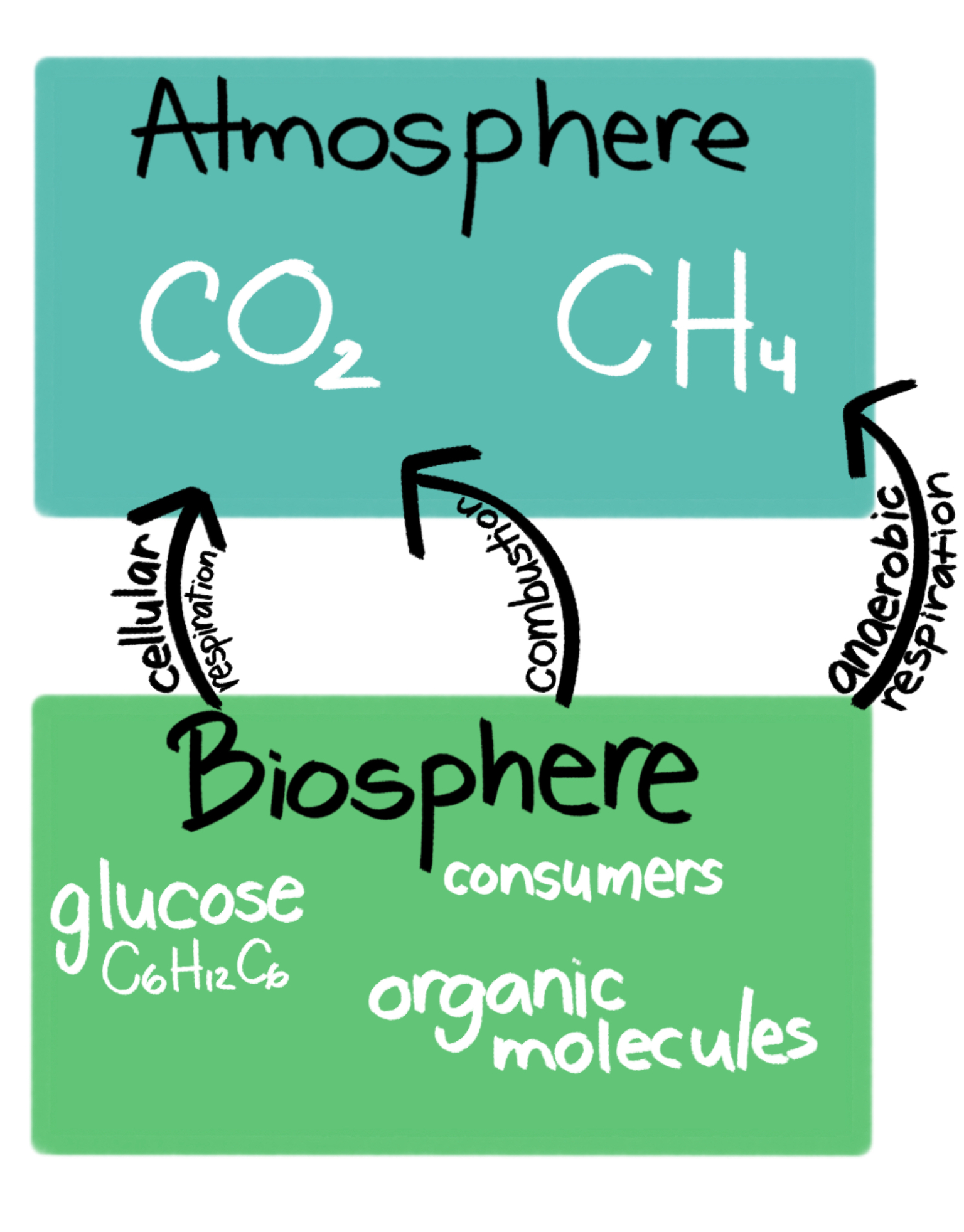
Biosphere to Lithosphere
- Fossil Fuel Formation
- Dead organic matter → Lithosphere
- Soil Absorption
- Carbon stored in dead plants’ roots → Lithosphere
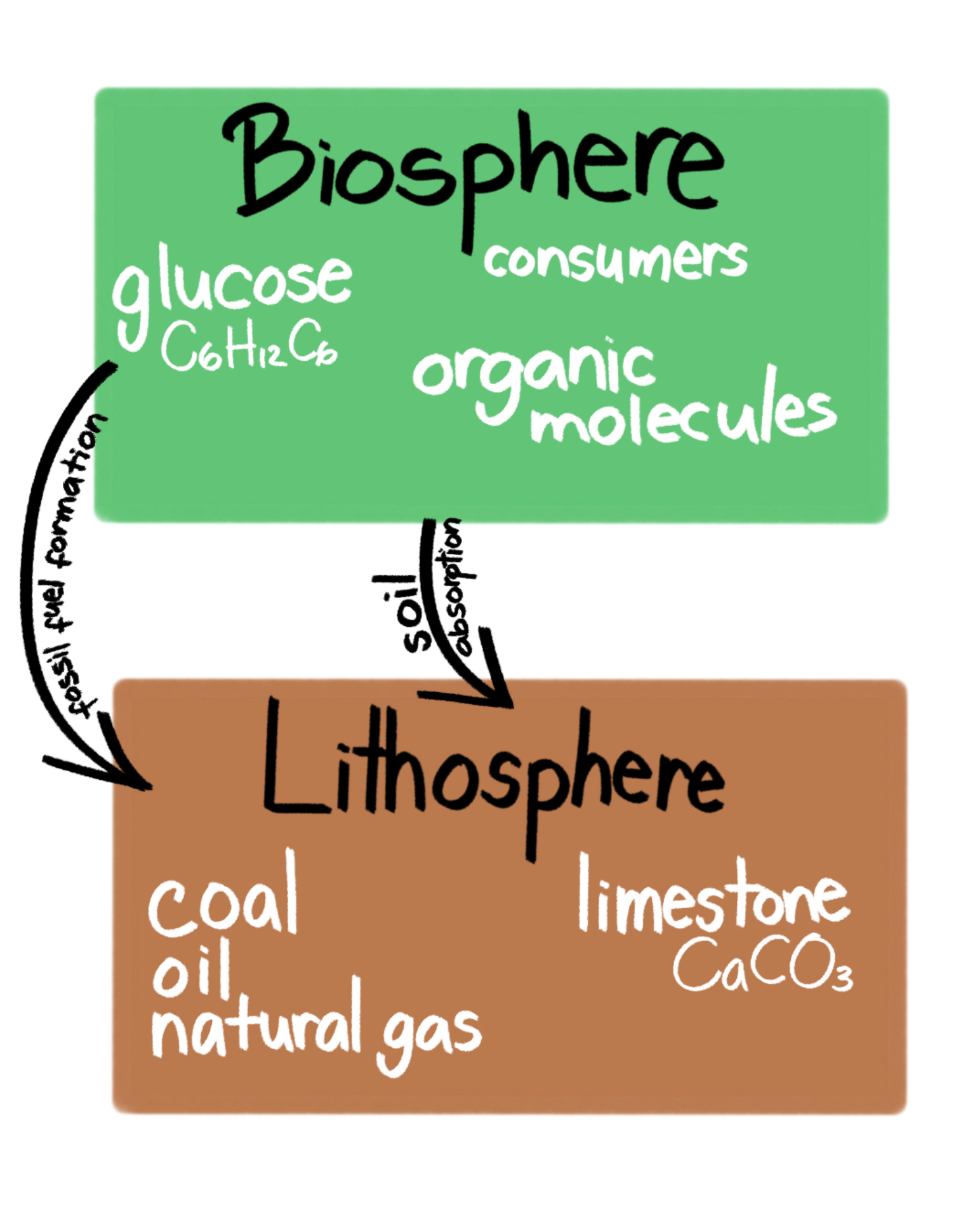
Lithosphere to Atmosphere
- Combustion of Fossil Fuels
- Fossil Fuels → Atmosphere
- Volcanic Eruptions
- Lithosphere → Atmosphere
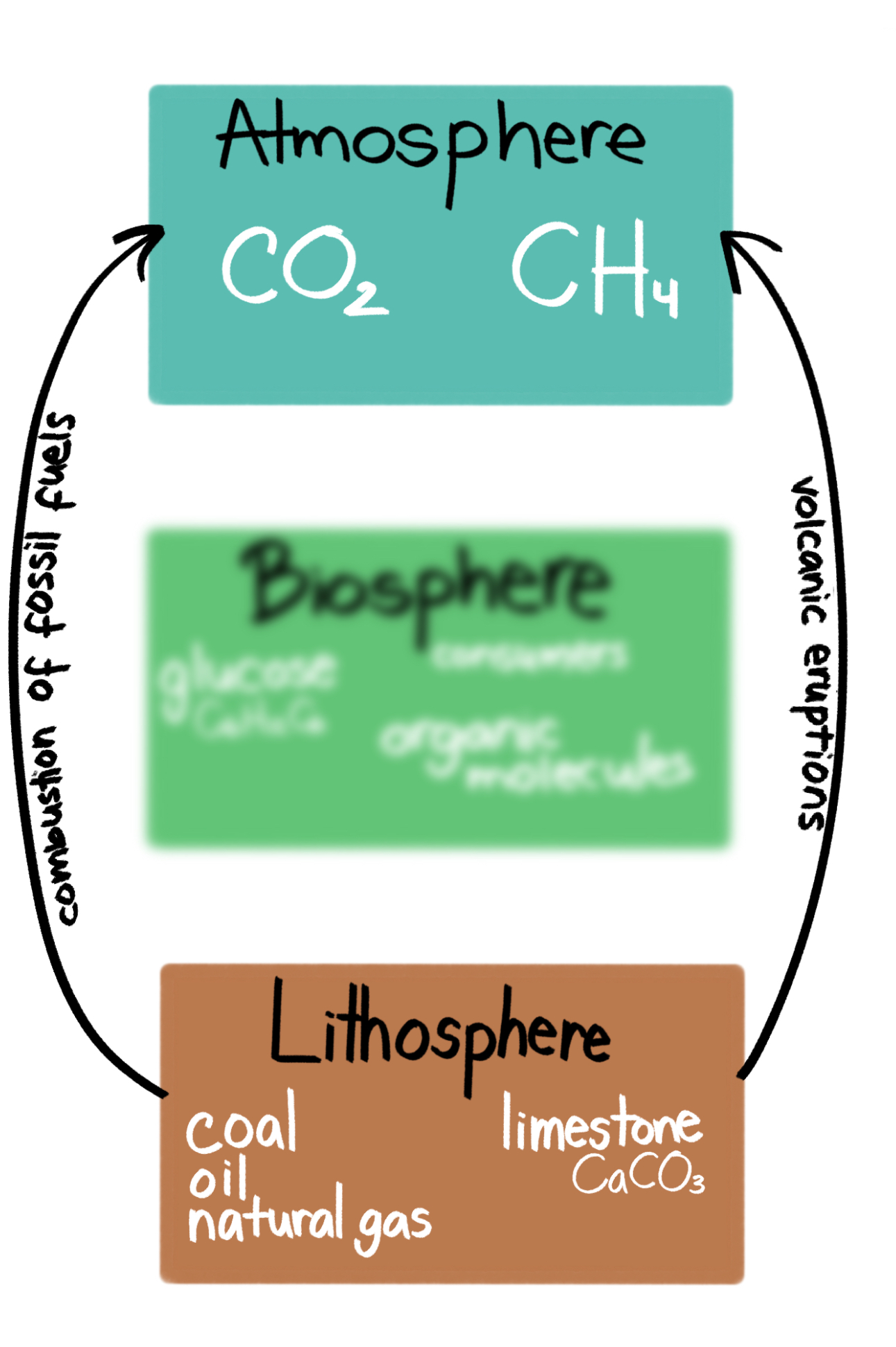
Atmosphere to Hydrosphere
Diffusion
- Carbon Dioxide (CO2) → CO2
Precipitation
- Carbon Dioxide (CO2) → Mixes with water (H2O) in the air → Carbonic Acid (H2CO3)
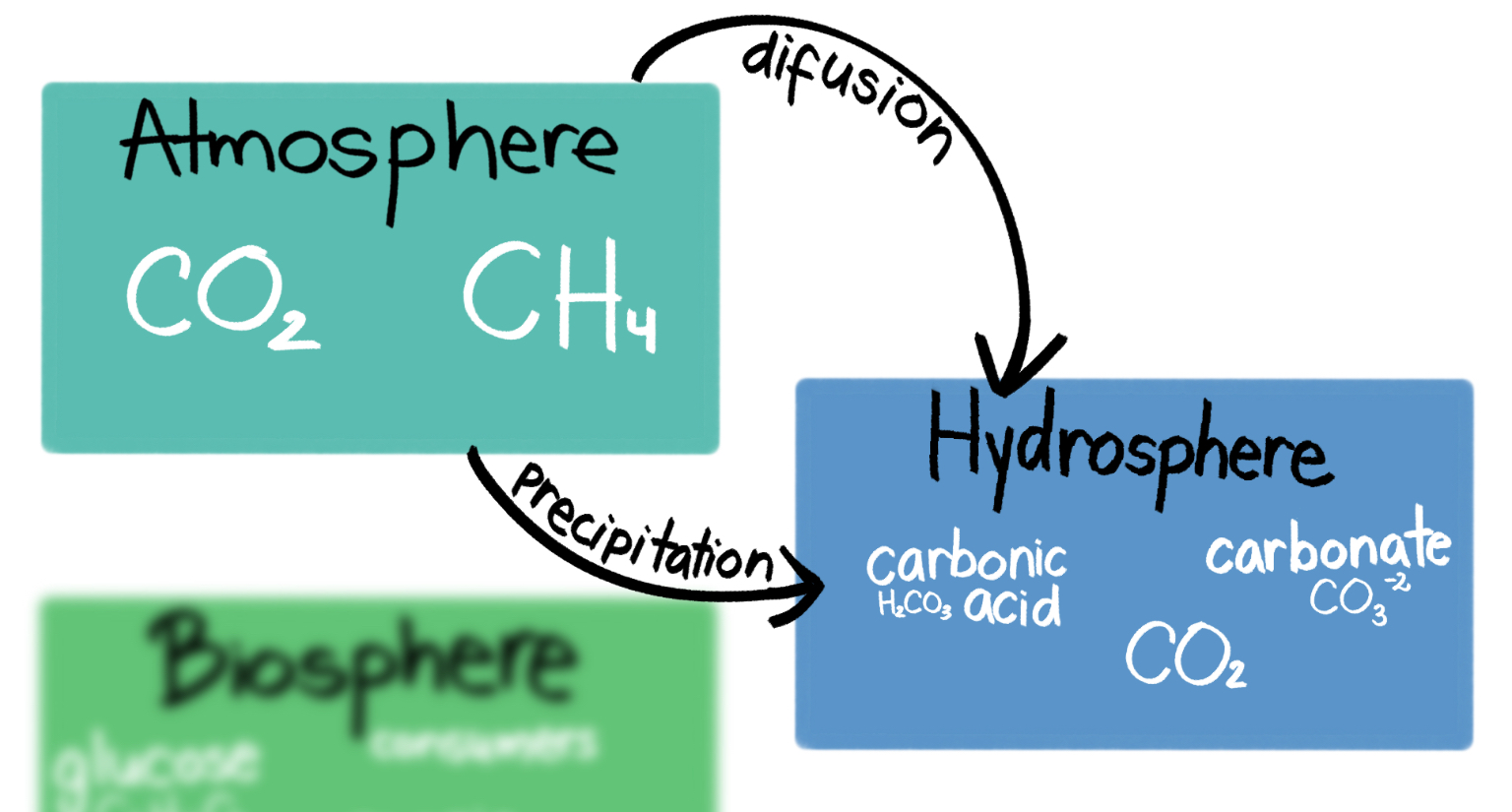
Hydrosphere to Ocean Biosphere
- Photosynthesis
- Carbon Dioxide (CO2)→ Plants
- Shell Formation
- Carbonate (CO3-2) → Mixes with Calcium (Ca+2) in the water → Calcium Carbonate (CaCO3)
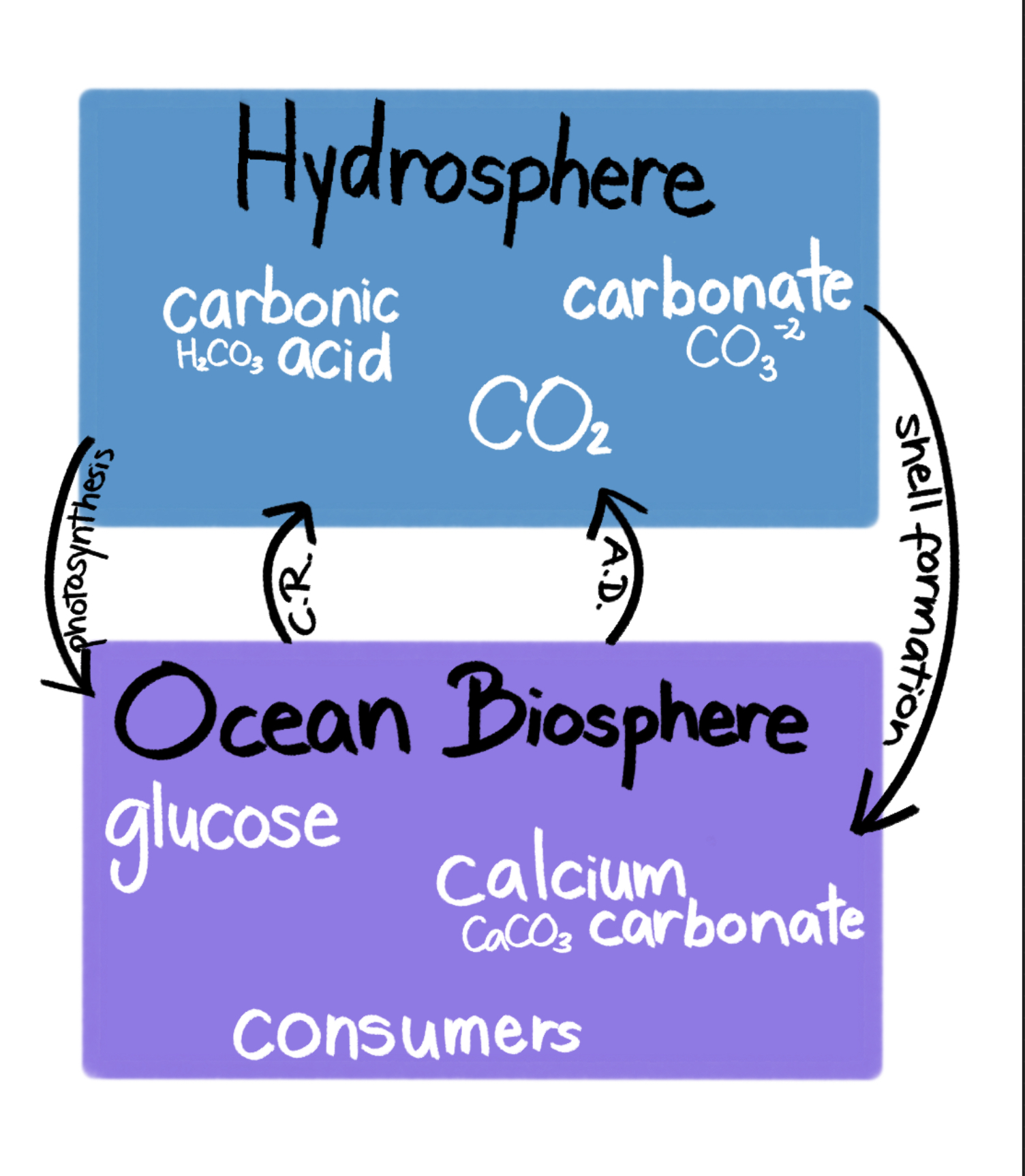
Ocean Biosphere to Lithosphere
- Deposition of Organic Matter
- Biomass → Fossil Fuels
- Deposition of Shells
- Shells (containing Calcium Carbonate) →Limestone

==Human Disruption==
- Deforestation
- Fewer trees/plants mean less photosynthesis and glucose.
- More carbon in the air.
- More carbon in the air makes more carbonic acid and more acid rain.
- More carbon in the air = more heat: global warming.
- Combustion of Fossil Fuels
- Used to take millions of years to release fossil fuels into the Atmosphere.
- Humans are burning it and quickly transferring it to the atmosphere.
- Traps a lot of heat: global warming.